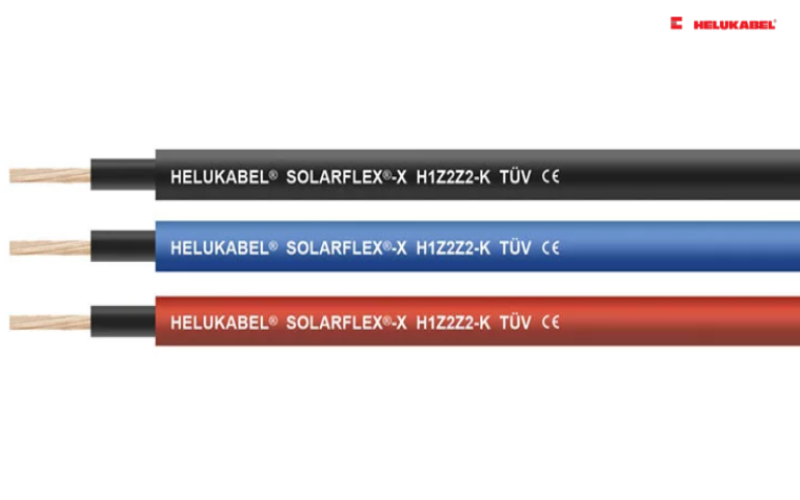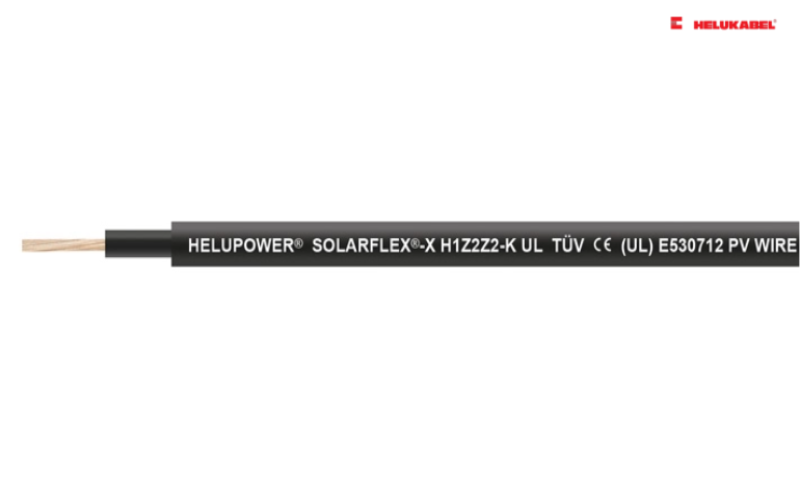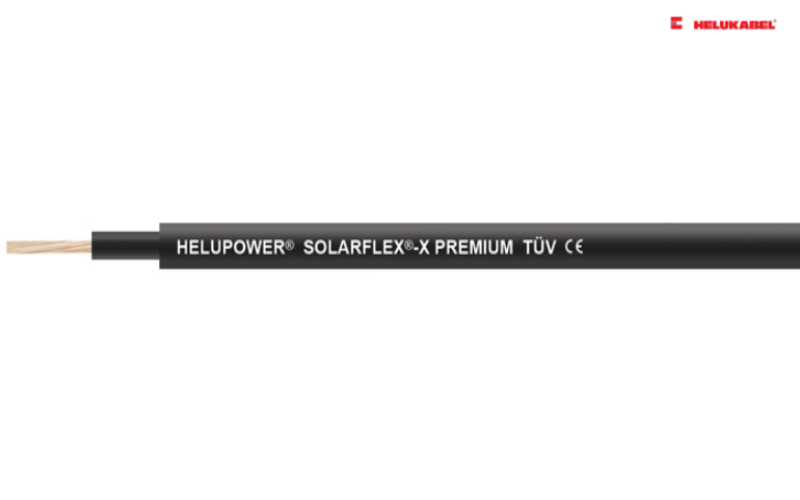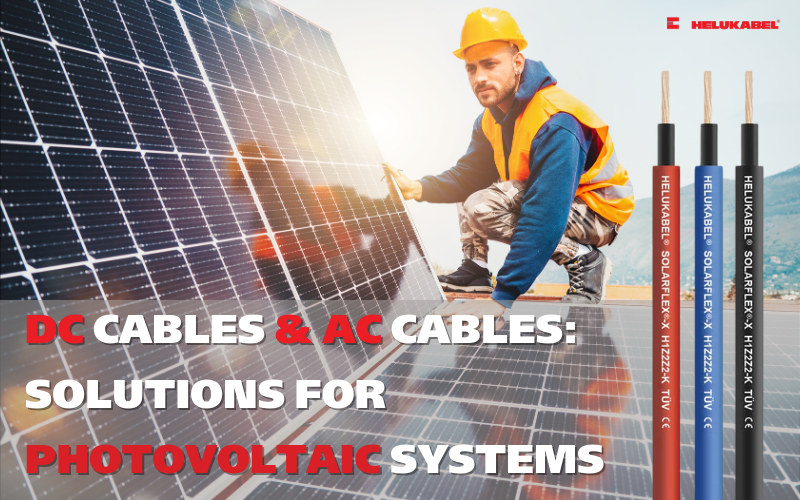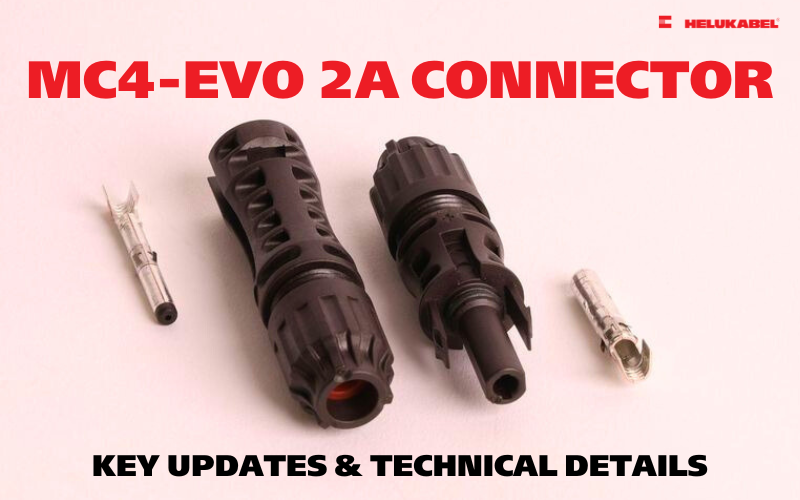The advantages and disadvantages of solar energy
Solar energy is a renewable energy source that has been rapidly developed in recent years. Let’s explore the advantages and disadvantages of solar energy in the following article!
Contents:
1. What is solar energy?
2. Advanatges of solar enegery
3. Disadvanatges of solar enegery
4. Forms of solar energy utilization
5. The current state of solar energy development in Vietnam - solutions from HELUKABEL
1. What is solar energy?
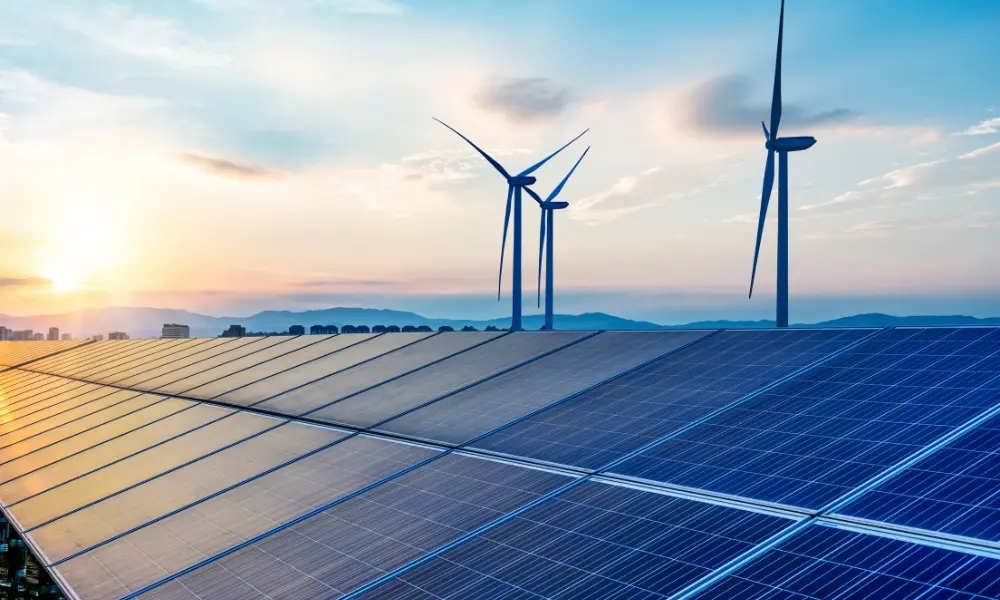
Solar energy is the energy harnessed from sunlight and converted into thermal or electrical energy. It is the cleanest and most abundant renewable energy source available today. Solar energy technologies can capture this energy for a variety of purposes, including electricity generation, lighting, water heating for residential, commercial, or industrial use.
Solar energy is extracted from the sun in the form of electromagnetic radiation (light, heat, and ultraviolet rays). By installing solar panels or solar energy collectors, this energy can be utilized for thermal applications (solar thermal) or electricity generation (photovoltaic).
2. Advantages of solar energy
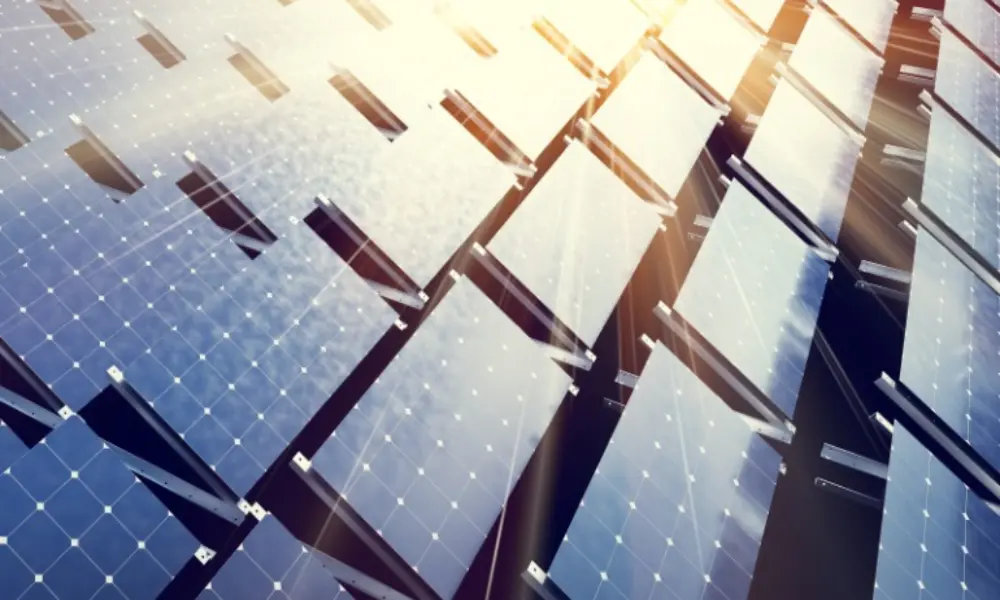
2.1 A renewable and sustainable energy source
One of the standout advantages of solar energy is that it is a clean, renewable energy source harnessed from natural sunligh. Even on rainy or overcast days, sunlight can still be partially absorbed and will return with full intensity during clearer weather. Particularly in Vietnam, the central and southern regions experience sunny weather almost year-round with less rainfall compared to other areas, making these regions ideal for the installation and use of solar energy systems.
Moreover, with advancements in modern technology, today’s solar panels have been significantly improved to function efficiently even in colder climates or areas with limited sunlight. As a result, solar energy can now be widely utilized across the country, becoming a sustainable and eco-friendly energy solution.
2.2 Reducing electricity costs
By utilizing a portion of the energy generated by solar energy systems, electricity bill will decrease. The amount of savings depends on the size of your system and your energy or heat consumption. For example, if you are a business operating a large-scale solar panel system, this shift can yield significant benefits, as a larger system can meet a substantial portion of your energy needs.
Additionally, under Decree No. 135/2024/NĐ-CP dated October 22, 2024, regarding mechanisms and policies to promote self-produced and self-consumed rooftop solar energy, individuals and organizations can sell surplus solar energy to Vietnam Electricity (EVN).
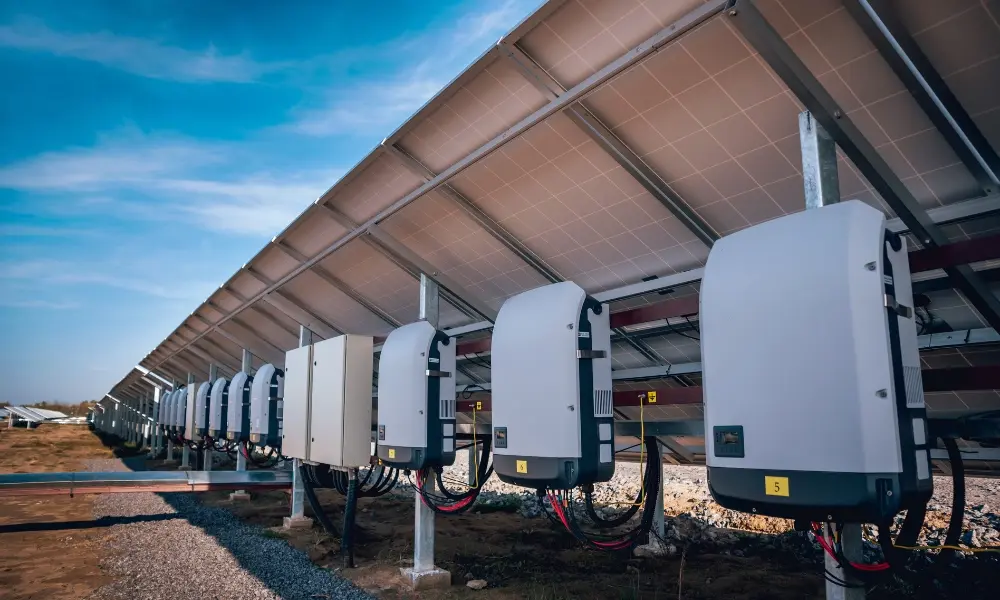
2.3 Relatively low maintenance costs
Unlike traditional energy sources that require frequent maintenance and repairs, solar panels have extremely low maintenance costs. This allows you to benefit from clean, renewable energy without the financial burden of frequent maintenance.
With a design free of moving parts or complex mechanisms, solar panels are built to withstand various weather conditions and remain efficient for many years. The inverter is typically the only component that may need replacement after 5–10 years, as it works continuously to convert solar energy into electricity and heat. Additionally, electric cables should be inspected periodically to ensure the system operates at optimal efficiency.
2.4 Diverse applications of solar energy
Solar energy is a versatile technology that can be deployed in various forms to meet energy demands. Solar energy systems can be installed as distributed generation systems (near the point of use) or developed into large-scale solar power plants.
One notable feature of both these forms is their ability to store the energy generated using advanced storage technologies. This enables solar energy to continue supplying power even after the sun has set. In Vietnam, with its abundant sunshine, adopting solar energy technologies not only meets residential energy needs but also supports the development of commercial and industrial sectors.
In addition to electricity generation, solar energy is applied in:
- Providing sustainable power to remote and rural areas without grid access.
- Desalinating water in regions with limited access to clean water.
- Supporting space research activities, such as powering satellites.
Modern technology also allows for solar energy integration into building materials, such as transparent solar windows, opening up new possibilities for innovative energy solutions.
3. Disadvantages of solar energy
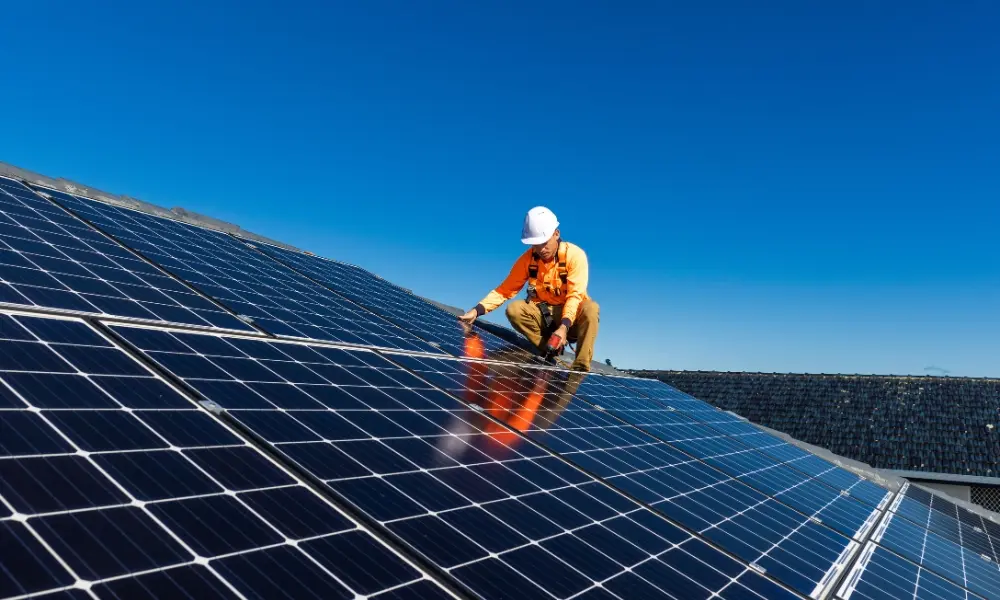
3.1 High initial investment costs
Although solar energy systems offer the advantage of low maintenance costs, the initial investment can be relatively high. This cost includes purchasing solar panels, inverters, storage batteries, electrical cabling systems, and installation fees. High-performance systems, such as bifacial solar panels or monocrystalline panels, are particularly more expensive than standard options. However, with continuous advancements in technology, the cost of solar equipment is expected to decrease in the future, making it more accessible to consumers.
3.2 Dependence on weather conditions
One of the main disadvantages of solar energy systems is their heavy reliance on weather conditions. The efficiency of solar panels decreases during cloudy, rainy, or low-sunlight days. In northern Vietnam, for example, winters often bring overcast weather, which can reduce the amount of energy generated. Additionally, solar energy cannot be collected at night, necessitating energy storage systems or integration with other energy sources to ensure a continuous power supply.
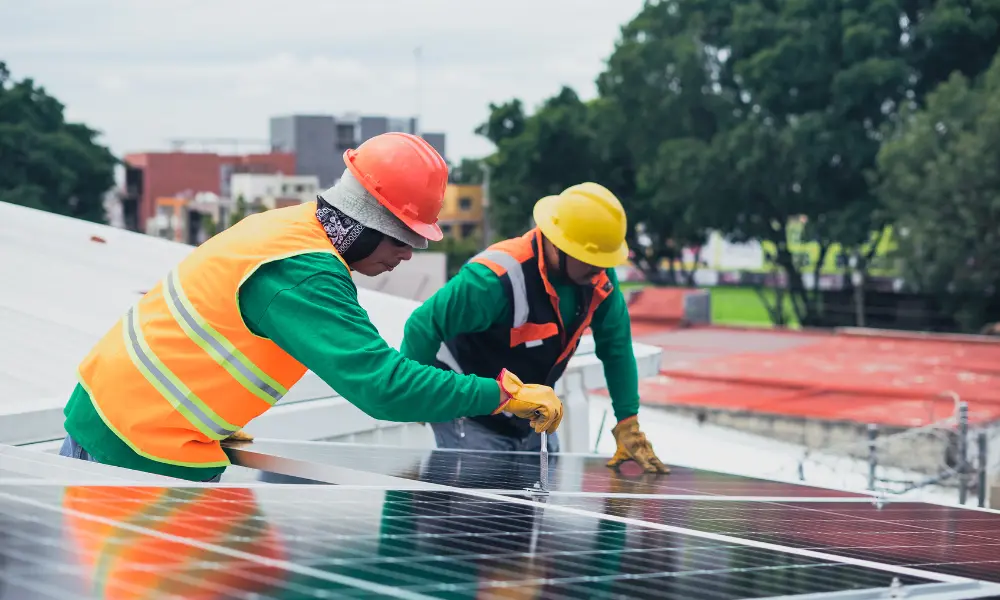
3.3 Space requirements for installation
The more electricity you want to generate, the more solar panels you need to install to maximize sunlight collection. Solar panels require significant space, and not all rooftops are large enough to accommodate the desired number of panels. Some roofs may also have obstacles, reducing the available installation area and affecting the system's overall efficiency.
3.4 Negative environmental impact
The carbon footprint of solar energy is relatively small, but this renewable energy source is not entirely free of environmental concerns. These concerns primarily involve land usage and waste generation. For example, a solar power plant supplying electricity to 1,000 households may require approximately 13 hectares of land.
Another factor to consider is the management and disposal of hazardous materials, such as metals and glass, used in manufacturing solar infrastructure components. These materials not only require significant energy to produce but also emit carbon during production. To mitigate environmental harm, these materials need careful handling and disposal at the end of a solar plant's life cycle.
According to the International Renewable Energy Agency (IRENA), solar energy systems could generate up to 78 million tons of waste by 2050, emphasizing the importance of sustainable waste management practices.
4. Forms of solar energy utilization
4.1 Photovoltaic solar energy
This form of energy is harnessed through photovoltaic systems, which utilize photovoltaic modules to directly convert sunlight into electricity. Solar panels contain photovoltaic cells, which, when exposed to direct sunlight, undergo ionization and release electrons. These electrons interact to generate an electric current.
Common methods of utilizing photovoltaic solar energy include rooftop solar systems, solar farms, and floating solar systems.
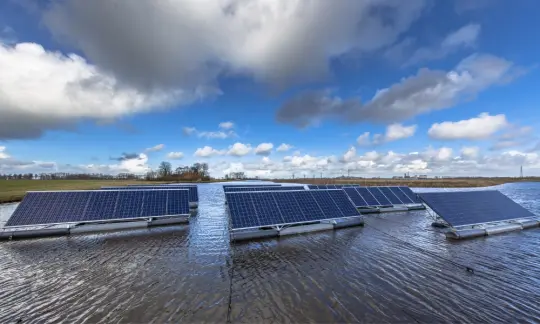
4.2 Solar thermal energy
Solar thermal energy devices use solar collectors to convert solar radiation into heat. These collectors gather and store solar energy, which is then used to heat water. Heated water serves various applications, such as supporting heating systems or providing hot water for residential, sanitary, or industrial purposes.
Another option is Concentrated Solar Power (CSP) technology. CSP systems use arrays of lenses or mirrors to focus sunlight onto a specific surface. The energy produced through this process is employed to generate electricity. This is achieved by using the heat to boil water, producing steam that powers, for example, the turbines of an electricity generator.
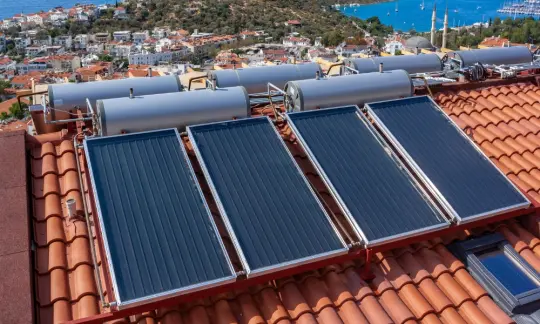
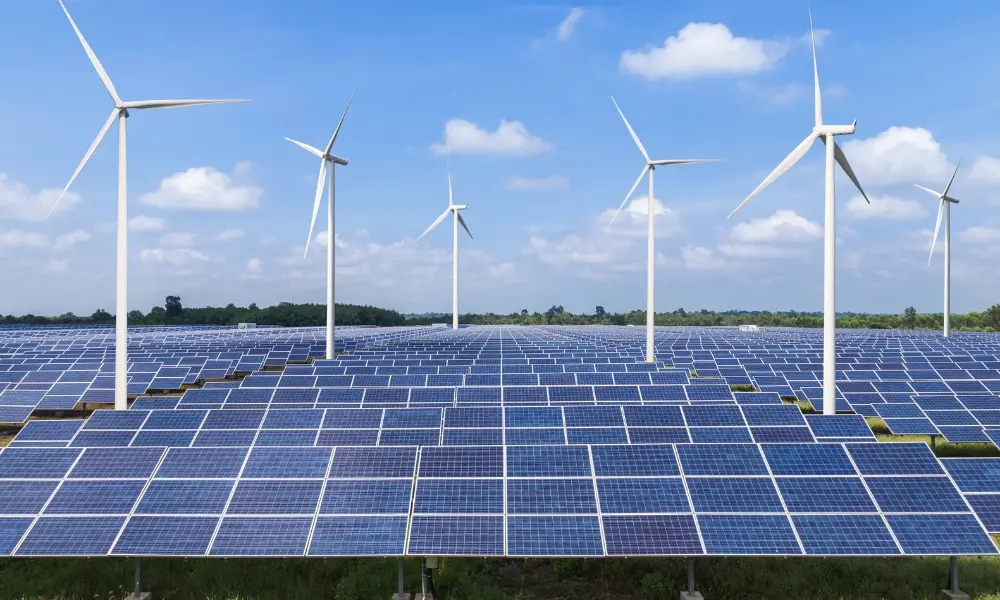
4.3 Passive solar energy
Passive solar energy is harnessed directly through materials and construction solutions, without converting it into other forms of energy as in previously discussed methods. Passive solar technology is a vital component of ecological design and bioclimatic architecture, primarily aimed at heating living spaces. Natural lighting, achieved either through direct sunlight or via light tubes with internal mirrors, can also be considered an example of passive solar energy application.
4.4 Hybrid solar energy
In this case, any type of solar energy mentioned earlier is combined with other energy sources, mainly renewable ones, to achieve a greater energy supply.
The most common example is the combination of solar energy and wind energy. Hybrid photovoltaic systems integrate solar panels with wind turbines, maximizing resource utilization from both sunlight and wind.
5. The current state of solar energy development in Vietnam
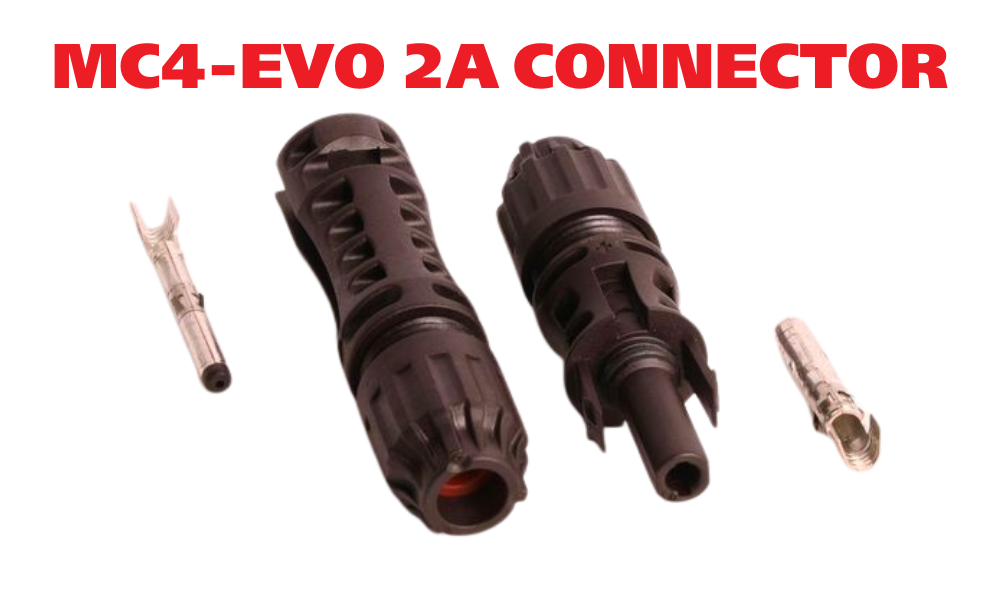
According to Power Development Plan VIII, solar energy - particularly self-produced and self-consumed rooftop solar power - is identified as one of the top priorities in Vietnam's energy sector. The government has set a target that, by 2030, 50% of government buildings and 50% of households will use rooftop solar power. This initiative not only helps reduce the burden on the national grid but also contributes to achieving net-zero emissions by 2050, as pledged at COP26.
Furthermore, the development of self-produced and self-consumed solar power systems brings economic benefits by reducing electricity consumption costs, utilizing rooftop space, and cutting greenhouse gas emissions. Following this direction, the supporting industries for solar energy, such as the production of equipment, cables, and specialized accessories, will play an increasingly important role.
Recognizing the growth potential of solar power in Vietnam, HELUKABEL has consistently researched and provided high-quality products that meet the needs of the solar industry. Some prominent product lines include:
- DC cables for solar energy systems: Designed to withstand harsh weather conditions, UV radiation, and provide long-lasting performance, ensuring efficient and safe power transmission for solar systems.
- MC4 connectors for solar panels: Ensuring secure and efficient connections between solar panels.
- Cable accessories and cable glands
With advanced technology and high-quality standards, HELUKABEL products not only comply with international standards but also contribute to promoting energy transition in Vietnam. This creates opportunities for investors and businesses in the solar power sector to choose optimal solutions, thereby supporting the sustainable development of the renewable energy industry in the country.
If you still have any concerns or questions, don't hesitate to reach out to HELUKABEL Vietnam's engineering team promptly for detailed assistance.
HELUKABEL® Vietnam
| Address | 905, Nguyen Kiem Street, Ward 3, Go Vap District, Ho Chi Minh City 700000, Vietnam |
| info@helukabel.com.vn | |
| Hotline | +84 28 77755578 |
| Website | www.helukabel.com.vn |
| Discover our products and place orders | Tiki | Product finder |
| Follow us on | Facebook | LinkedIn | Instagram | Youtube | Zalo | WhatsApp | Tiktok | Spotify |

